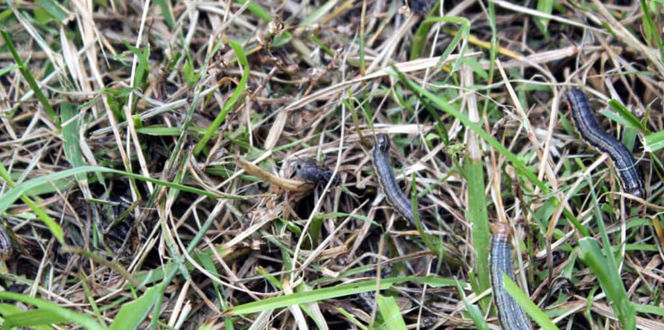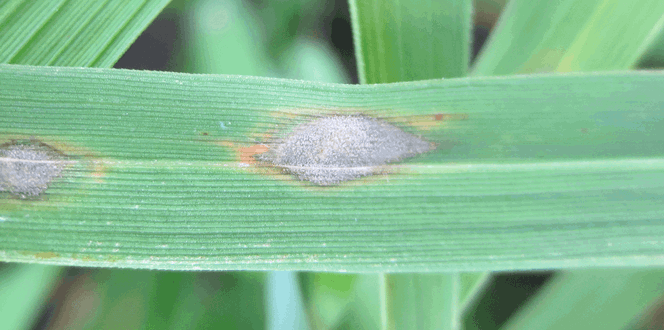Rust Disease Description:
Rust disease first appears as small, yellowish-orange to reddish-brown flecks on grass blades and eventually grows into raised pustules on blades and stems. Pustules are oval or elongated and contain powdery masses of yellowish-orange to reddish-brown spores. As they age, pustules turn brown to black, and heavily infected turf becomes thin and yellowish-orange to reddish-brown. Infected blades eventually turn yellow and die.
Hosts:
Most species of grass throughout North America are susceptible to rust disease. Kentucky bluegrass, perennial ryegrass, and tall fescue are affected most often. Grasses subject to stress, drought, low nitrogen and shade are usually the most susceptible.
Biology & Symptoms:
Rust disease is most common from late summer to early fall when the weather is dry and lawns grow more slowly. Warm, humid weather followed by hot, sunny weather, and cool nights with heavy dew, encourage this disease. It can spread by air, water, shoes, and lawn equipment. Mowing low, especially on Kentucky bluegrass, can increase the likelihood of rust disease infection.
Management:
Good cultural practices are the key to prevention because healthy grasses are better able to resist infection. Avoid overwatering or underwatering. Ideally, grass should be watered early in the day and receive 1 to 1 ½ inch of water per week through rainfall or sprinkling.
In the fall, apply a fertilizer with proper nitrogen levels. When mowing, remove no more than 1/3 of the grass blade with each cutting. Maintain the proper mowing height for your specific turf type. Although seldom needed, if rust disease attacks despite good cultural practices, fungicides are available for control.





